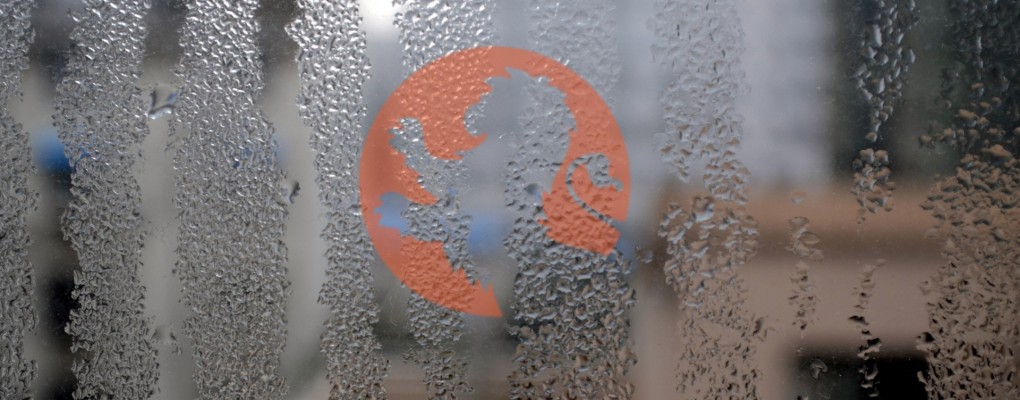Condensation in or on glass sealed units. It’s a complaint that crops up every year for installers, whether it’s a complaint from existing or new customers. But all of these complaints can be relatively easily resolved with the customer, once you know what information to provide.
So let’s look at the three different condensation complaints:
- Condensation due to “breakdown” of the glass sealed unit
This is where the seal has broken down, allowing water vapour to enter the cavity of the sealed unit and cause condensation. Such a complaint is easily resolved for a customer, by ordering and fitting a replacement sealed unit. - External condensation
Over recent years the energy efficiency of double and triple glazed sealed units utilising low emissivity glass has vastly improved, along with improved insulation requirements for replacement windows in the building regulations. Thermally efficient windows are so good at keeping the heat in that the outer pane can get cold as it is no longer being warmed by wasted heat. Under some weather conditions and at certain times of the year, this can result in the formation of condensation on the outside surface of the glass. This is a positive indication of a thermally efficient window.
Consumers often view such external condensation as a defect of the new windows and complain, which results in the installer having to explain how and why the phenomenon occurs. However, what is most important for installers is to safeguard themselves against such complaints. They can ensure this by including a paragraph in the contract terms and conditions explaining that external condensation may occur, and why. It is a good idea in the terms and conditions to refer to independent information on external condensation, such as the Glass and Glazing Federation (GGF) leaflet on condensation, or the Envirovent website www.envirovent.com, to give more credibility to the reasons the installer gives for the phenomenon.
- Condensation caused by high humidity
The third cause of condensation is the biggest cause of consumer complaints - that of high humidity in the consumer’s home, which the consumer sees as internal condensation on the room side of their double or triple glazed windows, known as internal condensation. Consumers often consider this type of condensation also to be a defect of the windows, rather than a product of their living conditions.
Internal condensation is not caused by double or triple glazing (although new windows can sometimes make condensation problems worse, by cutting out draughts). Treatment to reduce condensation is ventilation (to vent moisture-bearing air to the outside) and heating (to raise surfaces above dew point temperature).
Again, installers need to safeguard themselves against such internal condensation complaints, by including a paragraph in the contract terms and conditions explaining that internal condensation may occur and
why, referring to independent information on internal condensation.
But installers know all too well that reducing condensation is not a simple solution, and some consumers refuse to accept that it is not their new windows which are causing the internal condensation, leading to long disputes which are very time-consuming. There is, however, a way of installers using independent ventilation experts to help resolve such disputes and find solutions.

An example of such a ventilation expert company is Envirovent, who are members of the National Home Improvement Council. They are a national company of over 230 employees and specialist surveyors. According to the RICS, 1 in 5 homes in the UK suffer from condensation and mould problems, so internal condensation problems are not isolated. Modern homes now have improvements to make them warmer such as double glazing, central heating, cavity wall and loft insulation, and draught-free fitted doors, but this means the ventilation requirements in such homes are greater than ever. Yet according to Envirovent, the average 4-person household produces 16 pints of moisture per day. So where does all that moisture go? Well, it stays within the property and manifests itself on walls, behind wardrobes and of course on windows – being transparent this shows itself much clearer to the eye.
According to Envirovent, “standard” intermittent extract fans fail to provide a solution. And even when trickle vents are fitted to replacement windows, consumers seldom use them, so internal condensation can often appear on the room side of the windows. There are also “tipping points” which can cause internal condensation, such as a new member of the family (an extra 16 pints a day) or more insulation added, e.g. new windows.
So how can Envirovent help installers resolve consumer disputes regarding condensation? Well, DGCOS now has a partnership arrangement with Envirovent – when a DGCOS member is in a
If a DGCOS member wished to utilise Envirovent’s free home survey and report service, they should contact [email protected] advising they are a DGCOS member.
Have a question?
Call us on 0345 053 8975
Or send an email to [email protected]

